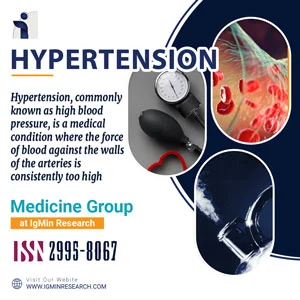About
Hypertension, commonly known as high blood pressure, is a chronic medical condition that significantly increases the risk of heart disease, stroke, and kidney failure. As one of the leading causes of morbidity and mortality worldwide, hypertension is a critical area of research focused on understanding its underlying mechanisms, risk factors, and effective management strategies. Researchers in this field study the genetic, environmental, and lifestyle influences that contribute to hypertension, aiming to develop new therapeutic approaches to control blood pressure and prevent complications.
The study of Hypertension integrates insights from cardiovascular medicine, endocrinology, and public health to improve diagnosis, treatment, and prevention strategies. By exploring areas such as pharmacotherapy, lifestyle interventions, and the impact of diet on blood pressure, research in hypertension seeks to enhance patient outcomes and reduce the global burden of this condition. Advancements in this field are essential for developing personalized treatment plans and optimizing long-term management.

Why publish with us?
Global Visibility – Indexed in major databases
Fast Peer Review – Decision within 14–21 days
Open Access – Maximize readership and citation
Multidisciplinary Scope – Biology, Medicine and Engineering
Editorial Board Excellence – Global experts involved
University Library Indexing – Via OCLC
Permanent Archiving – CrossRef DOI
APC – Affordable APCs with discounts
Citation – High Citation Potential
Which articles are now trending?
Research Articles
- Sorption-based Spectrophotometric Assay for Lead(II) with Immobilized Azo Ligand
- A New Modification of Classification of Traumatic Patients with Pelvic Fracture
- Influence of Polycarboxylate Superplasticizer on the Calorimetric and Physicomechanical Properties of Mortar
- Gaussian-Transform for the Dirac Wave Function and its Application to the Multicenter Molecular Integral Over Dirac Wave Functions for Solving the Molecular Matrix Dirac Equation
- Exploring Upper Limb Kinematics in Limited Vision Conditions: Preliminary Insights from 3D Motion Analysis and IMU Data
- Deep Learning-based Multi-class Three-dimensional (3-D) Object Classification using Phase-only Digital Holographic Information
Advertisement







